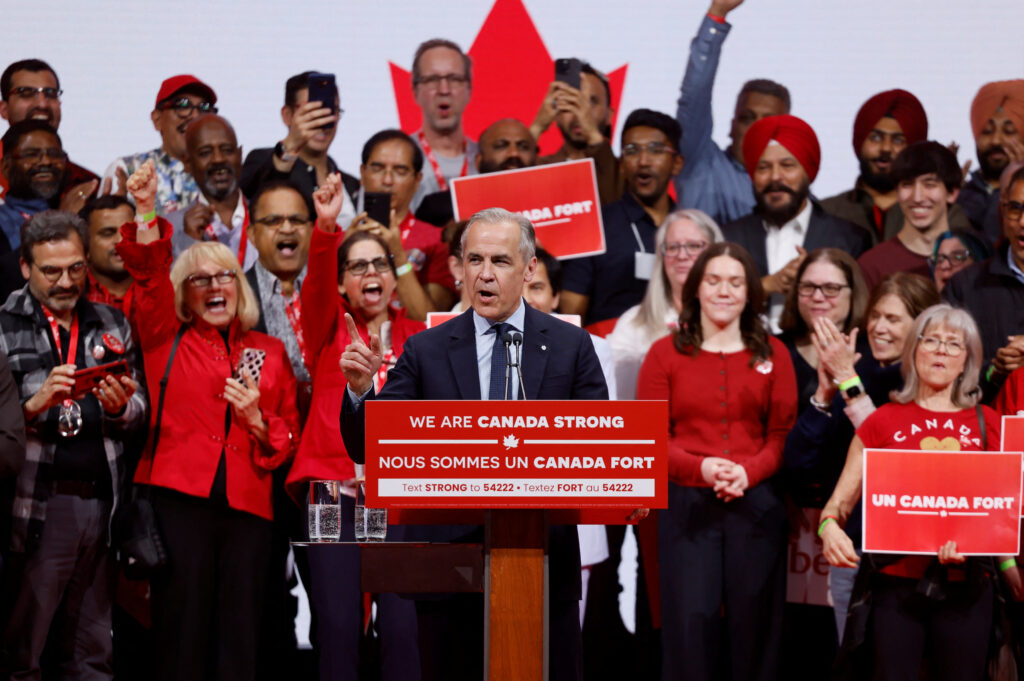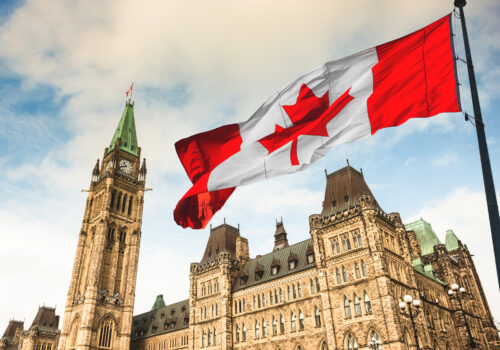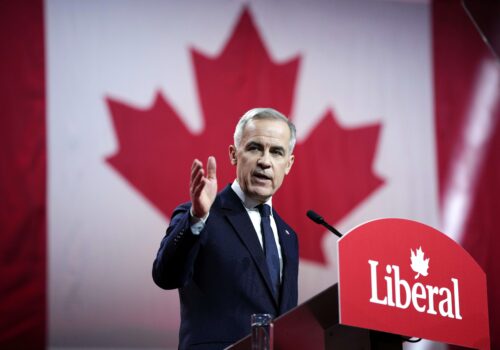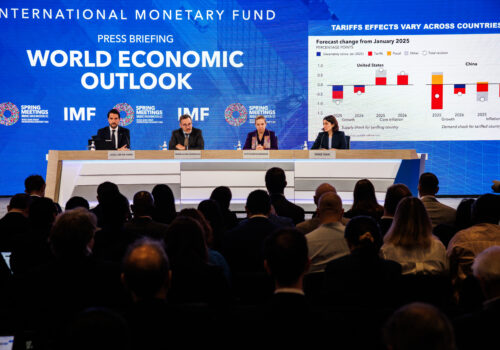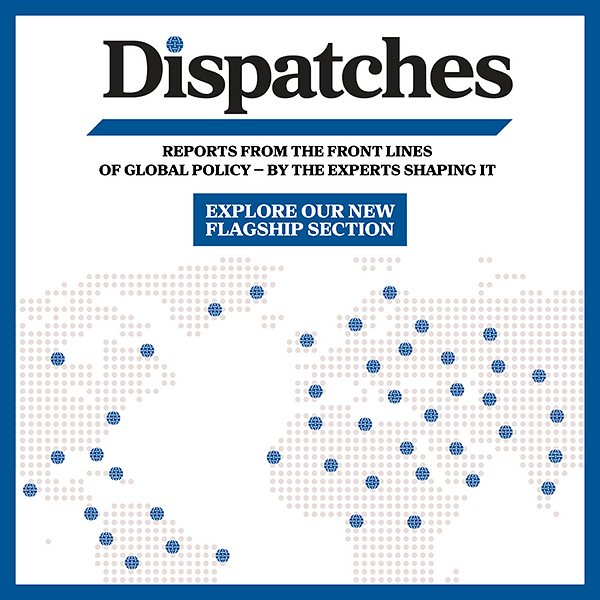Canadians are seeing red. Prime Minister Mark Carney will form a new government in Canada after his Liberal Party secured the most seats in parliament in Monday’s election, completing a remarkable political turnaround amid a simmering confrontation with the United States. The comeback win came as Carney—after taking over for Justin Trudeau in March—clashed with US President Donald Trump over tariff policy and Trump’s calls to add Canada as the “fifty-first state.” “Our old relationship with the United States, a relationship based on steadily increasing integration, is over,” Carney declared in his victory speech. What does the Liberals’ victory mean for trade, security, and diplomacy in North America and beyond? We put out the call to our experts for answers.
Click to jump to an expert analysis:
Christopher Sands: The results show a Canada both united and divided
Diane Francis: The election was a referendum on joining the United States. Canadians rejected it.
Michael Bociurkiw: Canadians voted for a steady hand in turbulent times
Imran Bayoumi: Expect Carney to pursue defense deals with new partners
Maite Gonzalez Latorre: Conservative wins in Alberta reveal the political divide in Canada
Reed Blakemore: Energy and infrastructure will be core to managing the US-Canada relationship
Mark Scott: Expect Carney to push ahead on AI and social media regulation
Layla Mashkoor: Meta’s news blackout in Canada creates a troubling precedent
The results show a Canada both united and divided
Canada’s April 28 federal election was a referendum on the country’s relationship with the United States. Both the governing Liberals and opposition Conservatives campaigned against pressure from the Trump administration—tariffs, border demands, and jabs about Canada as the “fifty-first state.” A surge of nationalist sentiment swept the country, including in Quebec. Canadians appeared more united than ever.
Yet the result was a divided verdict: a Liberal minority government, with 162 seats—ten short of a majority in the 343-seat House of Commons. It’s a gain from the 153 seats held before the election but not the majority Carney hoped for. Carney, elected as a member of parliament for the first time, will now be invited by the governor general to form a government.
Canada has elected only two majority governments since 2004. Minority governments typically govern by negotiating support vote by vote. The New Democratic Party’s poor showing in 2025 makes another formal “supply and confidence” agreement unlikely.
Conservative leader Pierre Poilievre lost his seat, and a party that led in polls for over a year failed to adjust its message after Trudeau’s exit. Carney outperformed expectations, but the appetite for change remains strong. Canadians are still divided on who should lead.
This result may be seen in Washington as weak. The Trump administration is expected to renew pressure on Canada to meet NATO’s 2 percent of gross domestic product defense spending target, strengthen border security, and unlock its critical minerals—goals first promised by Trudeau in 2019 with little progress.
June will bring two defining tests for Carney: hosting the Group of Seven (G7) summit in Kananaskis—Trump’s first visit to Canada in his second term—and attending the NATO summit in The Hague. How he performs will shape Canada’s standing abroad—and at home.
—Christopher Sands is an adjunct lecturer and the director of the Hopkins Center for Canadian Studies at the Johns Hopkins School of Advanced International Studies.
The election was a referendum on joining the United States. Canadians rejected it.
Canada’s political landscape shifted to a two-party system for the first time in years, giving the Liberals a slight advantage. But the man not even on the ballot, Trump, influenced the outcome more than did any of the Canadian party leaders. As such, the election of 2025 could be considered a referendum on joining the United States that was roundly rejected by Canadians.
Canadians fled into one of the two mainstream parties as Trump waded directly into the campaign. On election day, the US president broke the unwritten rule that US and Canadian leaders won’t interfere directly in elections in one another’s countries. Trump posted that Canadians should vote for him in order for Canada to become the fifty-first state.
It didn’t work.
—Diane Francis is a nonresident senior fellow with the Atlantic Council’s Eurasia Center. She is a well-known journalist, author, broadcaster, and editor-at-large at the National Post.
Canadians voted for a steady hand in turbulent times
OTTAWA—Canadians have never had much appetite for dramatic change, especially in turbulent times—a fact underscored by yesterday’s election results and record turnout in advance polls. Voters appeared to be looking for a steady, capable hand in Carney, a former banker: someone with the backbone to confront Trump, who seems intent on turning Canada into a de facto fifty-first state, and the competence to undo nearly a decade of economic mismanagement under Trudeau.
Trump’s belligerence helped the Liberals erase a twenty-one-point deficit and avoid a return to the opposition benches. But in the final days of the campaign, domestic concerns reclaimed center stage—housing affordability, the inflation of food prices, a crumbling health system, immigration, and crime. A tragic vehicle attack at a Filipino festival in Vancouver on the campaign’s final day may have briefly boosted support for Poilievre, who campaigned on tough-on-crime policies. Nevertheless, Poilievre lost his Ottawa seat and now faces political purgatory.
Carney’s ability to enact his agenda will depend largely on how quickly he builds working relationships with opposition parties—notably the Bloc Québécois, which secured at least twenty-three seats. It also hinges on whether the Conservatives cooperate in a “Team Canada” approach or spend the next six months trying to bring down the government.
On the global stage, Carney must work to reestablish Canada as a respected middle power in a world where the rules-based order is unraveling. With the world’s largest Ukrainian diaspora outside Russia, the Liberals face pressure to maintain strong support for Kyiv—including calls to transfer twenty-three billion Canadian dollars in frozen Russian assets to help fund Ukraine’s war effort and reconstruction. Canada’s upcoming G7 summit offers Carney an opportunity to rally allies against returning $300 billion in frozen Russian central bank reserves to Moscow.
In style as well as substance, Carney marks a stark shift from his predecessor. Gone are the flashy socks, selfies, hobnobbing with Hollywood celebrities, and empty virtue signals. Though he has the charisma of an icicle in a Canadian winter, Carney brings confidence, competence, and a steady hand—the qualities Canadians seem to value most right now.
—Michael Bociurkiw is a nonresident senior fellow at the Atlantic Council’s Eurasia Center.
Expect Carney to pursue defense deals with new partners
Both Carney and Poilievre made foreign policy and defense a central pillar of their campaigns, with both calling for increased investment in the Arctic and increased defense spending. For Carney to achieve this, expect him to look beyond the traditional defense partnership with the United States and to forge new, smaller, defense deals with a variety of nations.
In Carney’s first trip abroad as prime minister, he visited Paris and London, spurning the traditional initial stop in Washington, DC. On the trip, the prime minister said that Canada was reconsidering its commitment to purchase F-35 fighter jets from the United States, and he announced the framework for a new security and intelligence partnership with France.
As Canada faces an increasingly volatile world, expect Carney to continue to pursue deals and new partnerships like the decision to purchase the JORN over-the-horizon radar from Australia. Closer ties between Canada and South Korea are also possible, with a Korean delegation visiting Ottawa early in March to pitch Canada on the purchase of submarines. Canada’s Arctic Foreign Policy white paper, released in December 2024, called for closer cooperation with the Nordic states (Denmark, Finland, Iceland, Norway, and Sweden), leveraging the security challenges and NATO membership shared by these nations.
With Carney declaring that Canada’s old relationship with the United States is “over,” expect the new government to look away from furthering closer defense ties with the United States, except where needed, such as on North American Aerospace Defense Command (NORAD) modernization. Ottawa will instead be seeking to forge relationships with other countries that have a shared threat perception and possess valuable technology and insights that can strengthen Canada.
—Imran Bayoumi is an associate director at the Atlantic Council’s Scowcroft Center for Strategy and Security.
Conservative wins in Alberta reveal the political divide in Canada
Elbows up for Carney, but elbows down for Liberals in Alberta. This morning’s results confirmed Conservative dominance across the province, with the New Democratic Party managing to hold just one seat and the Liberals securing only two. The province has sent a large team of Conservative wins to Ottawa, though a handful of city ridings hosted tight races, highlighting Alberta’s persistent rural-urban divide.
While Conservatives and Liberals battled fiercely at the national level, Alberta presented a simpler equation: guaranteed Conservative victories with only potential New Democratic Party upsets in select ridings. Canadians clearly recognized this election’s importance with over seven million advance ballots cast nationwide, setting a record. Alberta saw turnout exceeding 63 percent, with Elections Canada counting 2,064,167 votes from 96 percent of polls out of 3,234,505 registered voters.
The election results have definitively answered whether Alberta voters would choose the New Democratic Party or the Liberals for provincial representation in competitive races against Conservatives. During his victory speech, Carney emphasized national unity: “Who’s ready to stand up for Canada with me? And who’s ready to build Canada strong?” With blue-collar Albertans significantly impacted by US tariffs, Carney now faces a critical opportunity to demonstrate his commitment to all Canadians, not just Liberal supporters or Ontario residents.
Alberta Premier Danielle Smith, who has aligned closely with Trump, and Carney have not started their relationship on solid footing. As an Edmonton native, however, Carney may leverage his Alberta connections to build bridges with Smith and provincial voters despite the overwhelming Conservative victory in the province.
—Maite Gonzalez Latorre is a program assistant at the Atlantic Council’s Adrienne Arsht Latin America Center.
Next, Carney will need to strengthen coordination among Canada’s provinces
With Canada’s federal election now behind us, Carney and his Liberal government face an important task: consolidating the country’s economic power to respond more effectively to global challenges.
Unlike the United States, where the federal government can regulate nearly all economic activity, Canada’s Constitution grants provinces broad authority. This fractured structure can hamper the federal government’s ability to respond swiftly and with a unified strategy to external economic pressures.
The recent US imposition of tariffs on Canadian goods highlighted this vulnerability. Instead of presenting a coordinated national response, Alberta, Canada’s largest oil-producing province, broke ranks with Ottawa. While Canadian oil is a critical energy source for US refineries, Alberta refused to support leveraging this as a bargaining tool. This divergence weakened Canada’s negotiating position and underscored how regional interests can undermine national cohesion.
The United States-Mexico-Canada (USMCA) trade agreement adds further complexity. Article 32.10 requires Canada to notify the United States and Mexico if it seeks a trade deal with a nonmarket economy—potentially allowing them to withdraw from the agreement. This restricts Canada’s trade flexibility and reinforces its dependence on US policy.
To secure its economic future, the next federal government must prioritize a more unified approach to economic governance. Strengthening coordination with the provinces is no longer optional—it is essential. Without it, Canada will remain a collection of competing regional interests, ill-equipped to respond to external pressures or shape its own global economic path. As the 2026 USMCA review approaches, Canada needs a clearer, united voice—not only to protect existing partnerships but to ensure it can build new ones. Strategic alignment—at home and abroad—is the only way forward.
—Kimberly Donovan is the Director of the Atlantic Council’s Economic Statecraft Initiative.
—Maia Nikoladze is an associate director at the Atlantic Council’s Economic Statecraft Initiative.
—Lize de Kruijf is a project assistant at the Atlantic Council’s Economic Statecraft Initiative.
For more on Canada’s need for economic consolidation, read the Economic Statecraft Initiative’s report:
Energy and infrastructure will be core to managing the US-Canada relationship
The Liberal Party’s victory is a profound change from just six months ago, when the Conservatives held a 20 percentage point lead in the polls. That the Liberal Party will now find a relatively simple pathway to building a majority coalition, while Poilievre lost his own seat in Parliament to a Liberal candidate, underscores how adverse the reaction in Canada has been to the Trump administration’s rhetoric around Canada’s sovereignty and to the disruption of US-Canadian economic integration through tariffs. Rather than a Conservative government in Ottawa that may have been philosophically aligned if not collaborative with its agenda, the White House will now have a Canadian counterpart with a clear mandate to assert its strength and independence while beginning a process of economic diversification.
But now the hard work begins, with energy and infrastructure playing a key role in the months ahead. Energy—specifically crude oil and electricity—is one of the foundational pieces of the US-Canada relationship. Tariff exemptions on Canadian crude reflect this reality, given their connection to refineries in the US Midwest and as a reliable, secure source of heavy crude. From oil and gas to minerals and electricity, expanding Canadian energy resources are a core part of managing US energy prices, and they are worthwhile contributions to the idea of American (or North American) Energy Dominance.
A Carney-led government will have to embrace this opportunity. During his campaign, Carney spoke about revisiting Canada’s carbon price regime, which was a major part of the Conservative platform and has to-date been an obstacle to unlocking investment in Canadian energy. However, Carney has committed to sustaining legislation on infrastructure impact assessments, which has been a pain point for energy companies to expand their own infrastructure. Those specific policy measures aside, Carney has largely communicated that his government will seek broad-based energy investment, including for critical minerals and next-generation nuclear.
The details of the Canadian energy agenda will be fulcrum issues for any of Ottawa’s ambitions to diversify energy exports away from the United States and toward global markets. Energy resources remain largely the jurisdiction of Canada’s individual provinces, and how Carney navigates a federal energy platform will be critical to building the cross-provincial partnerships necessary to reach new export markets. The negotiation of those partnerships has been a longstanding obstacle to east-west energy infrastructure in Canada. With that in mind, Carney’s diversification strategy is as much a function of internal diplomacy as it is external.
—Reed Blakemore is a director with the Atlantic Council Global Energy Center.
Expect Carney to push ahead on AI and social media regulation
In the build-up to this week’s election, there were widespread efforts across social media to undermine political candidates and Canada’s democratic institutions. Those tactics have now become a mainstay in many votes worldwide, and Canada was no exception. Ahead of the April 28 vote, local officials coordinated with outside researchers to flag potentially harmful online content. That included content by foreign actors, including some from the United States, seeking to influence how Canadians voted.
Yet despite these digital political messages, the online conversation around the election was dominated by offline events, especially Canada’s ongoing strained relationship with the United States. It is almost impossible to quantify the impact of online influence operations. But on the day after election day, it is hard to say such tactics played a meaningful role ahead of the Liberal Party’s victory because offline events—and not digital narratives—appear to have driven many voters’ choices.
In the weeks ahead, Ottawa will likely double down on tech policy issues that had stalled under Trudeau’s leadership. Efforts around artificial intelligence (AI) governance and greater checks on social media are likely as Carney sets out his policy objectives to reposition the country in the wake of its deteriorating relationship with the United States.
—Mark Scott is a senior resident fellow at the Digital Forensic Research Lab’s (DFRLab) Democracy + Tech Initiative within the Atlantic Council Technology Programs.
Meta’s news blackout in Canada creates a troubling precedent
During Canada’s short-lived thirty-five-day election cycle, candidates took their campaigns to cities, towns, and online platforms to win over voters. One distinguishing feature of Canada’s information ecosystem is the absence of news content on Facebook and Instagram, following Meta’s decision to block it in response to the Canadian Online News Act. This is particularly noteworthy as Facebook was reported to be the platform most used by Canadians.
Exacerbating the issue was Meta’s January 2025 decision to end its fact-checking programs, which played an important role in maintaining protective safeguards against information manipulation—safeguards that are even more necessary in the face of proliferating AI-enabled deceptions.
Canadian Meta users were left to navigate an uncertain landscape, one without adequate protections but rife with potential risks and deliberate harms. This creates a concerning precedent, suggesting that platform resistance may create information vulnerabilities that can be exploited during critical democratic processes.
As the tactics of information manipulation evolve, democratic societies must foster adaptable, evidence-based responses that protect electoral integrity and preserve the principles of open, free discourse. This requires ongoing innovation in both policy and technology to stay ahead of emerging threats while upholding the values of democracy.
—Layla Mashkoor is a deputy managing editor at the Atlantic Council’s Digital Forensic Research Lab.
Further reading
Mon, Mar 10, 2025
Experts react: What Mark Carney means for the US-Canada relationship
New Atlanticist By
As the next prime minister of Canada prepares to take office, Atlantic Council experts look at what’s ahead for Ottawa and its relationship with Washington.
Tue, Apr 22, 2025
Is the global economy headed for a reset, recession, or both?
Fast Thinking By
The International Monetary Fund has just released its latest World Economic Outlook. Atlantic Council experts dig into the details.
Tue, Apr 8, 2025
‘How did things ever get so far? It was so unfortunate, so unnecessary.’
Inflection Points Today By Frederick Kempe
As a global trade war heats up, The Godfather films offer a way to think about US President Donald Trump’s tariff strategy and the market fallout that has resulted.
Image: Canada's Prime Minister Mark Carney speaks at the Liberal Party election night headquarters in Ottawa, Ontario, Canada April 29, 2025. REUTERS/Blair Gable
